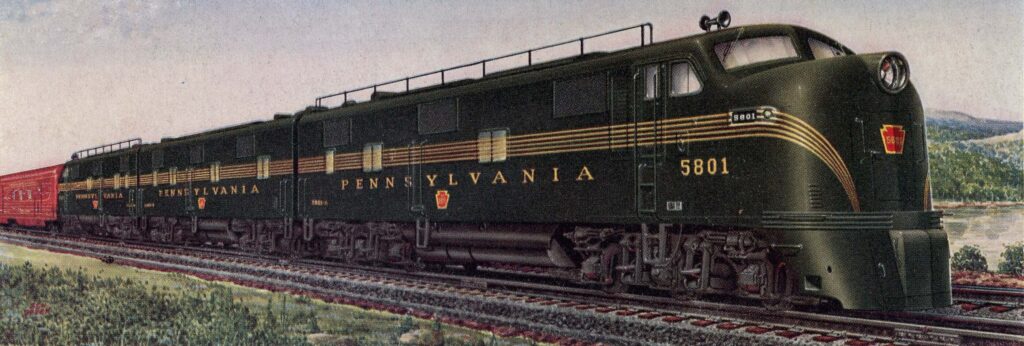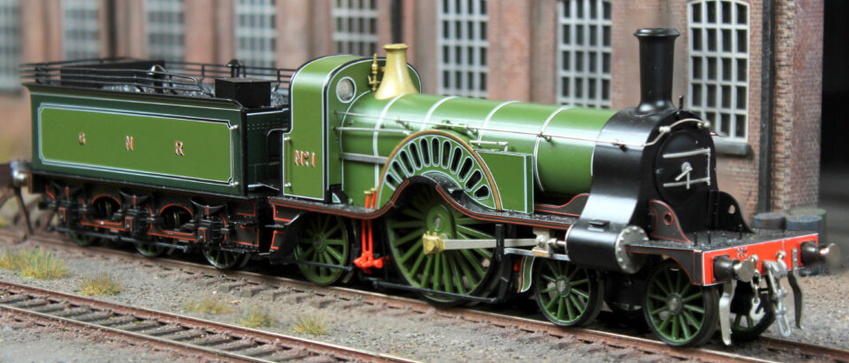Anniversaries are numerous but in railroading, April 13th holds great significance for on that date in 1846, the former titan of the rails was born: the Pennsylvania Railroad. Its legacy continues to hold model railroaders and historians captive long after the passing of its corporate banner 56 years ago. Just witness the number of PRR articles, plans, and photos that continue to dominate all forms of media. The PRR was impressive! In 1920, the system was 11,730 miles long, consisted of 26,600 track miles, scheduled 4,000 passenger and 3,000 freight trains a day. PRR employed 220,000 in that year – compared to the current total US railroad employment of 138,792 (as of 12-31-23). The PRR was much more than a railroad: it had a navy of ferry boats, tug boats, barges, and freight boats and had a tepid interest in early motor freight, bus service, and air transportation. A corporate affiliate held securities in real estate, power companies, water companies, and securities in strategic railroads that were used more or less as pawns in the continuing battle to gain traffic and control the market. By anyone’s standard, the PRR fit the definition of a monopoly east of Chicago.
Yet the monopoly cried foul when General Motors EMD gained market share in the race to dieselize American railroading. The path forward with technology can be difficult, especially in the contest between steam and diesels that existed between 1940 and 1950. The PRR alliance with the coal industry also played a role in their initial resistance to embracing diesel-electric locomotives. But the crucible occurred between 1945 and 1947 when the PRR compared the performance of early EMD “E” and “F” units alongside its cumbersome and problematic T-1 and Q-class duplex design steam locomotives. The diesels won hands down but still, PRR management would not place quantity orders with EMD without one last challenge. James M. Symes, Operating Vice President (later PRR Chairman who hatched the PRR takeover of the NYC scheme in 1957), sent PRR men to EMD shops to take notes of specialized tools and dies used in diesel production and later, clandestinely made many moves to obtain patented EMD data concerning the construction of diesel-electric locomotives, all with the intention of PRR building their own diesel-electric locomotives at Altoona. EMD quickly learned of this scheme and confronted them. Faced with that challenge and continuing financial pressures that were mounting, PRR backed down. Apparently, B&O men were quick learners since they built one duplex and promptly canned the concept back in 1937. Still, die-hard duplex fans carry the banner for the PRR today and as we write, a new, full-sized T-1 is taking shape! Once in service, it will be interesting to see if this vindicates the efficiency of diesels that the railroads capitulated to and confirms the decision to nix duplex production 77 years ago.
Model railroaders can embrace any mix of locomotives and rolling stock and size of layout without fears of “monopoly,” and we are proud to offer a wide selection of all forms of locomotives and rolling stock, from a wide range of eras, to choose from. For PRR fans, take note of the new line of Broadway Limited PRR-designed coaches, combines, and business cars that will be released later this year and place orders now to make certain that you won’t be disappointed. No matter what your goals and ambitions are, make MTS your first stop when expanding your model railroad empire!
Frank Wrabel
The post Monopoly Cries Foul first appeared on ModelTrainStuff Blog.
The post Monopoly Cries Foul appeared first on ModelTrainStuff Blog.


